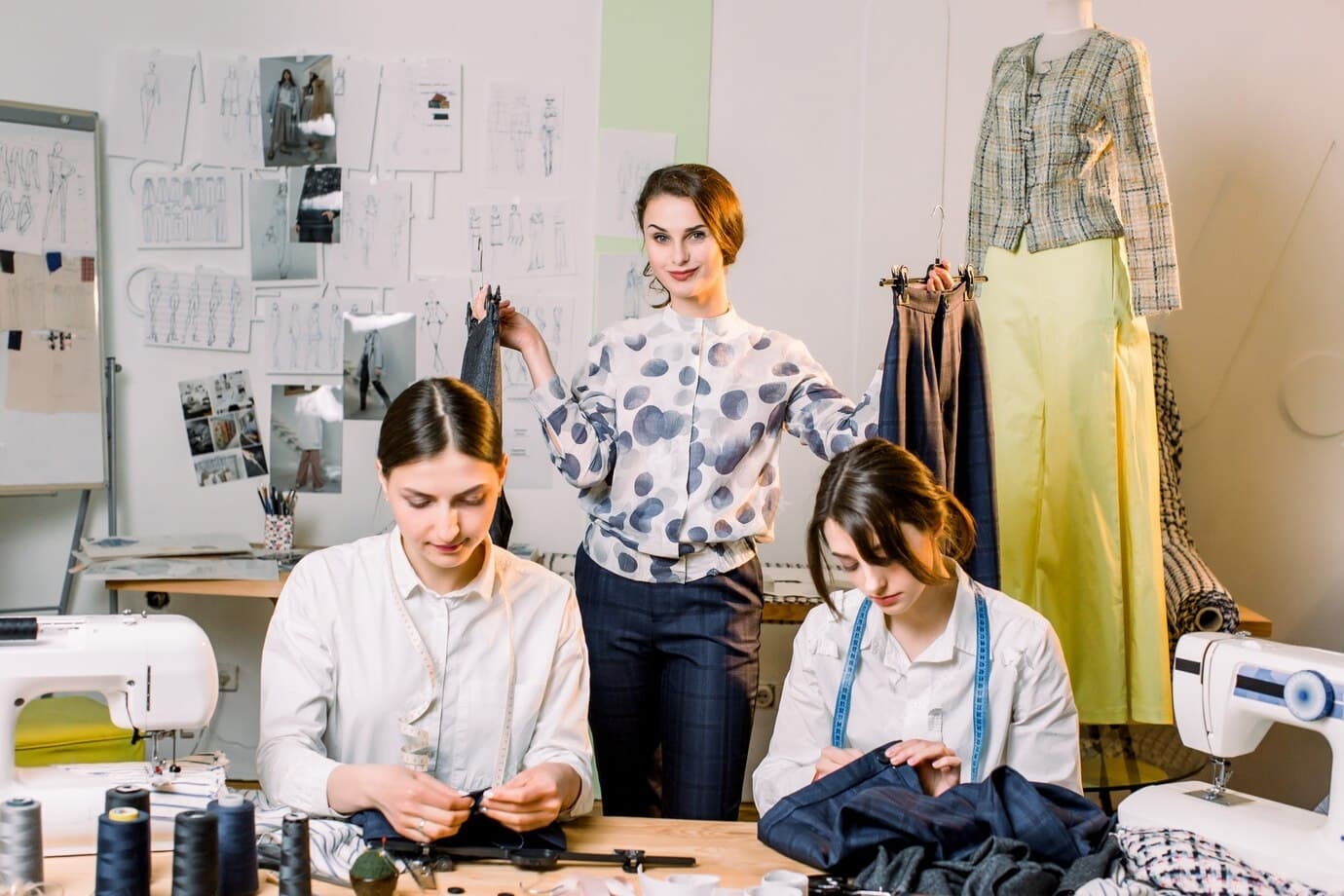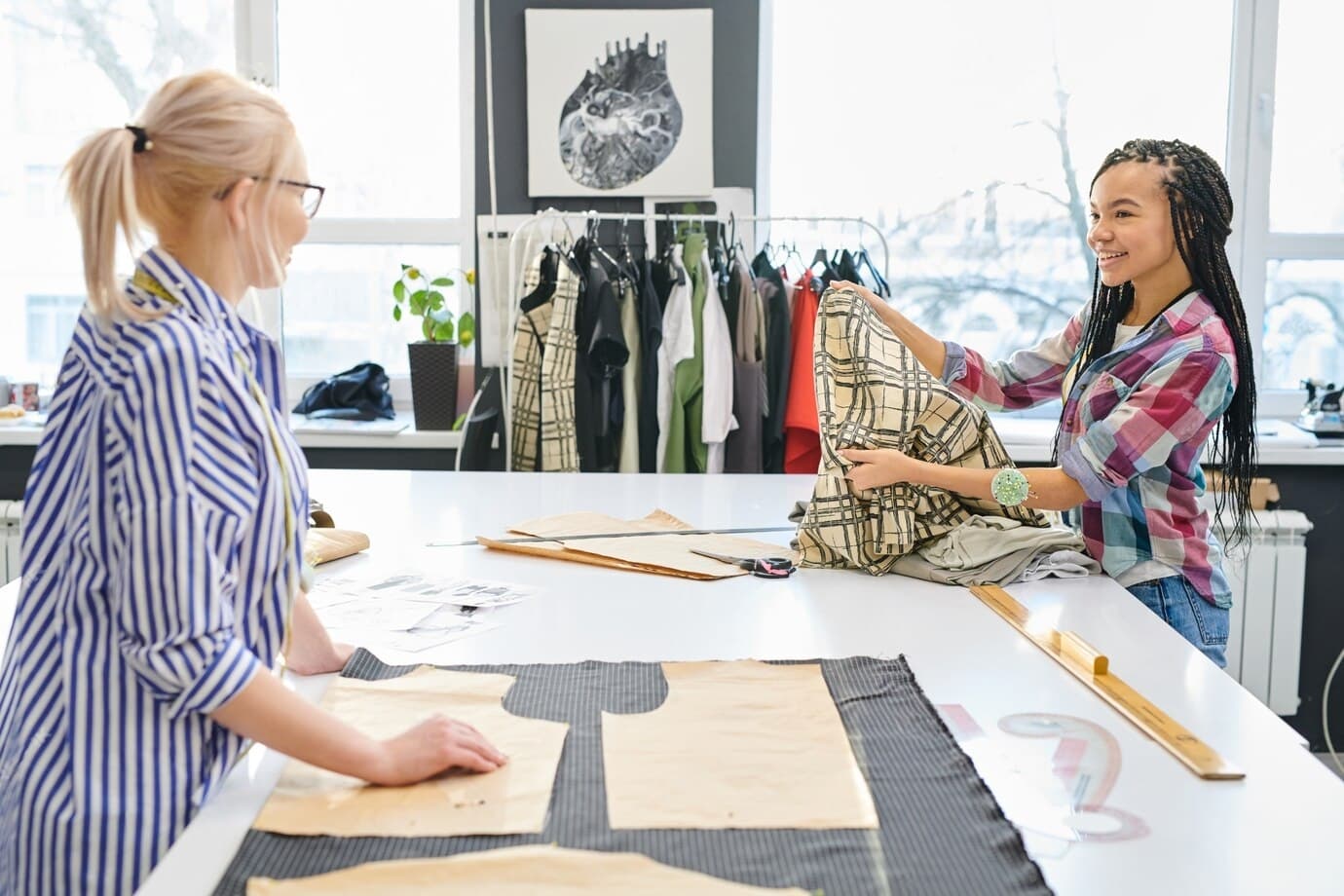Practical Skills in Fashion Design to Learn for Real-World Success 2024
- Fashion Design
Practical Skills in Fashion Design to Learn for Real-World Success 2024
Contact us
Bengaluru
Campus 1 : JD School of Design, No. 18-1, Brigade Road, Bengaluru,Karnataka – 560 001.
Campus 2 : No. 40, Swan House, 4th Cross, Residency Road, Bengaluru, Karnataka – 560001.
Goa
Musthtifund Saunstha , Near Mahalaxmi Temple,Dada Vaidya Road, Goa-403001
Fashion design is an ever-evolving industry that demands creativity, innovation, and technical expertise. To thrive in this competitive field, aspiring designers need more than just theoretical knowledge. Hands-on learning is crucial for developing practical skills in fashion design, bridging the gap between classroom education and real-world application. This blog post explores the importance of practical skills in fashion design and how hands-on learning can prepare you for a successful career.
The Importance of Practical Skills in Fashion Design
Why Hands-On Learning Matters

In fashion design, hands-on learning is vital because it allows students to apply theoretical concepts in real-world scenarios. This experiential approach helps students understand the intricacies of design, from fabric selection to garment construction. By engaging in Fashion design practical workshops, students develop a deeper appreciation for the craft and gain the confidence to tackle complex design challenges.
Bridging the Gap Between Theory and Practice

While classroom lectures provide foundational knowledge, hands-on learning bridges the gap between theory and practice. It enables students to experiment with different techniques, tools, and materials, fostering creativity and innovation. Practical skills in fashion design, such as draping, pattern making, and sewing, are best learned through direct experience rather than textbooks alone.
Core Practical Skills in Fashion Design
Mastering Draping and Pattern Making
Draping and pattern-making are fundamental skills in fashion design. Draping involves manipulating fabric on a dress form to create a garment’s shape and structure while pattern-making translates these designs into paper templates. Mastering these techniques allows designers to bring their visions to life with precision and accuracy.
Techniques for Effective Draping
Effective draping requires a keen eye for detail and a thorough understanding of fabric behavior. Start by selecting a suitable fabric, pinning it to the dress form, and manipulating it to create the desired silhouette. Practice is key to developing proficiency in draping, as it helps refine your technique and build confidence in your design choices.
Steps in Pattern Making
Pattern-making involves several steps, including creating a basic block, manipulating the block to achieve the desired design, and adding seam allowances. Using tools such as rulers, French curves, and tracing wheels, you can draft patterns that serve as blueprints for garment construction. Attention to detail and precision are essential in pattern-making to ensure a perfect fit and finish.
Developing Garment Construction Skills
Garment construction is the process of assembling a garment from its components. This skill encompasses various techniques, including sewing, hemming, and finishing. Practical skills in fashion design are honed through hands-on experience in garment construction, enabling designers to create high-quality, wearable pieces.
Sewing Techniques for Beginners
For beginners, mastering basic sewing techniques is crucial. Start with straight seams, practice backstitching, and learn how to sew curves and corners. Understanding different types of stitches, such as zigzag and overlock, is also important for creating durable and professionally finished garments. Regular practice and attention to detail will improve your sewing skills over time.
Advanced Garment Construction Methods
As you progress, explore advanced garment construction methods, such as tailoring, couture techniques, and the use of specialized sewing machines. Tailoring involves precise fitting and hand-stitching techniques, while couture methods focus on intricate details and high-quality finishes. Experimenting with these advanced fashion design techniques will elevate your design skills and enhance the quality of your creations.
Exploring Textile Design and Fabric Manipulation
Textile design and fabric manipulation are essential aspects of fashion design. Understanding how to work with different fabrics and create unique textures and patterns can significantly enhance your designs. Hands-on learning in these areas helps develop a keen sense of material properties and creative manipulation techniques.
Techniques in Textile Design
Textile design involves creating patterns and textures on fabric through various methods, such as printing, dyeing, and weaving. Experimenting with these techniques allows you to develop custom fabrics that add uniqueness to your designs. Hands-on projects, such as screen printing or tie-dyeing, provide valuable experience in textile design.
Fabric Manipulation for Unique Designs
Fabric manipulation techniques, such as pleating, gathering, and smocking, add dimension and interest to garments. Practicing these techniques on different types of fabric helps you understand their behavior and potential. Incorporating fabric manipulation into your designs can create visually striking and innovative pieces.
Real-World Applications of Practical Skills
Internship Programs and Real-World Experience
Fashion design internship programs offer invaluable real-world experience, allowing you to apply your practical skills in a professional setting. Working alongside experienced designers, you gain insights into industry practices, from design conceptualization to production. Internships also provide networking opportunities and a chance to build a professional portfolio.
Fashion Design Workshops and Masterclasses

Participating in fashion design workshops and masterclasses is another way to enhance your practical skills. These hands-on sessions, often led by industry experts, focus on specific techniques or aspects of design. Workshops provide an immersive learning experience, enabling you to refine your skills and stay updated with the latest trends and technologies.
Creating a Professional Portfolio
A strong portfolio showcases your practical skills and design abilities to potential employers or clients. Include a variety of projects that demonstrate your expertise in different areas, such as garment construction, textile design, and fabric manipulation. High-quality photographs and detailed descriptions of your work will make your portfolio stand out. Fashion portfolio development is a critical step in presenting your skills to the industry.
Benefits of Hands-On Learning in Fashion Design
Enhanced Creativity and Innovation
Hands-on learning fosters creativity and innovation by encouraging experimentation and exploration. By working directly with materials and techniques, you can push the boundaries of traditional design and develop unique, original concepts. Practical skills in fashion design empower you to bring your creative visions to life.
Building Confidence and Competence
Fashion design training builds confidence in your abilities as a designer. The more you practice and refine your techniques, the more competent and self-assured you become. Confidence is essential in the fashion industry, where presenting your work and ideas effectively can open doors to new opportunities.
Preparing for a Successful Career

Practical skills in fashion design are essential for a successful career in the industry. Employers and clients value designers who can demonstrate hands-on expertise and a deep understanding of the design process. By developing these skills through hands-on learning, you position yourself as a competent and versatile designer ready to meet the demands of the fashion world.
Hands-on learning is indispensable for developing practical skills in fashion design. From mastering draping and pattern making to exploring textile design and fabric manipulation, direct experience is crucial for success. Whether through internships, workshops, or personal projects, hands-on learning prepares you for the real-world challenges of the fashion industry. Embrace these opportunities to enhance your skills at JD School of Design which boosts your confidence, and shapes a rewarding career in fashion design. Through fashion design courses with real-world projects and real-life fashion design training, you will be well-equipped to tackle the industry’s demands and thrive as a professional designer.
